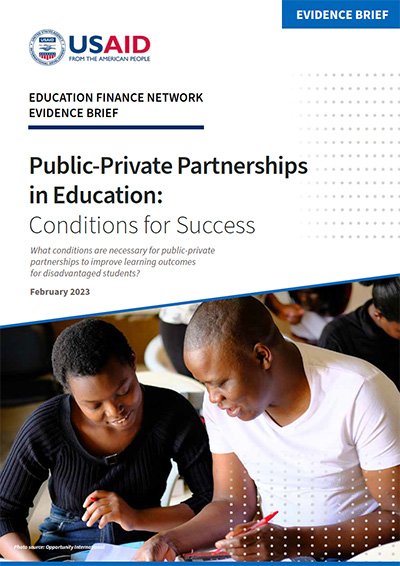Public-Private Partnerships in Education: Conditions for Success

The Public-Private Partnerships (PPPs) in Education evidence brief by the Education Finance Network reviews the literature on PPPs in primary and secondary education globally and identifies the necessary conditions for the effective implementation of PPP models.
PPPs have become a widespread form of education delivery in low- and middle-income countries, pursued by governments as a cost-effective model of expanding education access and quality in resource-constrained environments.
However, despite promising evidence that PPPs successfully increase enrollment and expand access for out-of-school students, the evidence is mixed on whether PPPs improve learning outcomes for the most disadvantaged students. Further, while PPPs frequently expand access, they may disproportionately serve upper-middle-income students and increase inequity. To focus the analysis of this brief on equity outcomes for disadvantaged students, this desk review emphasizes studies that account for student family background and income level.
This evidence brief draws upon findings from a range of regional contexts and identifies four of the most common factors positively affecting the success of PPPs in improving learning outcomes. The brief also provides considerations for policymakers for each of the four factors.